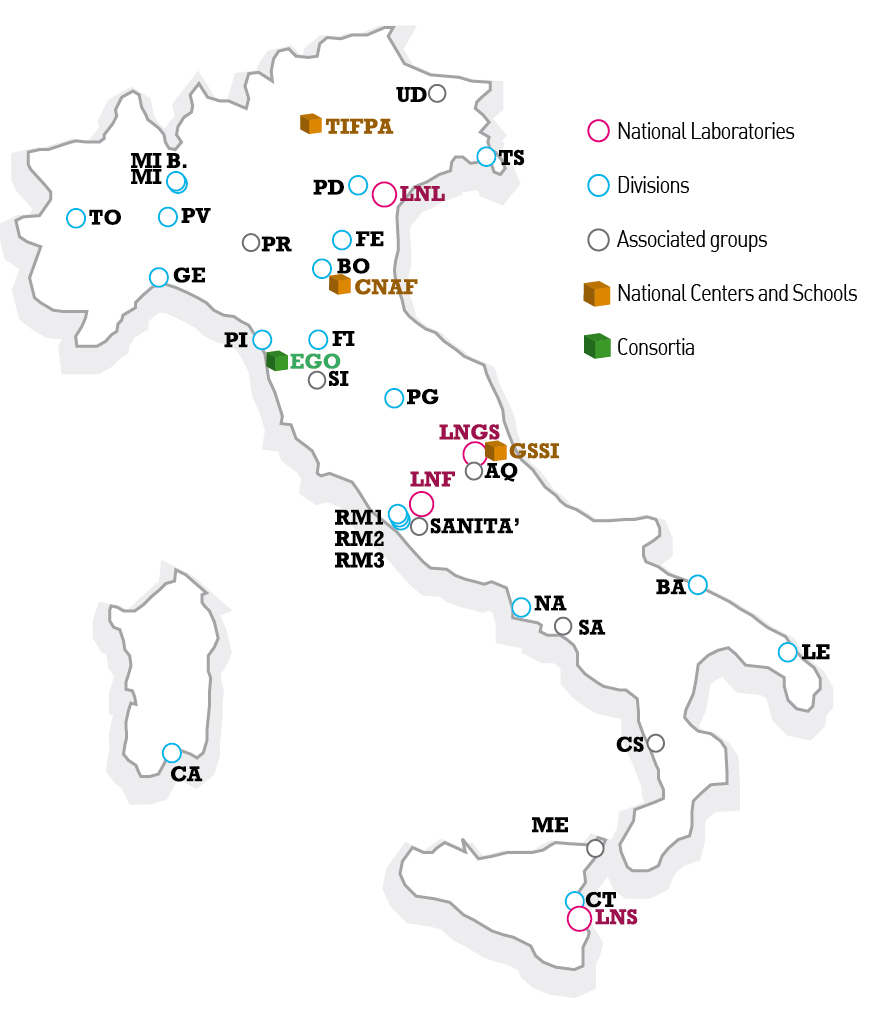GSS
Gauge Theories, Supergravity and String Theory
Abstract
The research project of GSS investigates a variety of challenging problems in supersymmetric Quantum Field Theories, aimed at a unified description of Quantum Gravity and Gauge interactions.
There are four main themes:
• String Theory, M-Theory, Supergravity
• Perturbative and non-perturbative properties of Gauge Theories
• Supersymmetric Black Holes, Holography and Microstate Counting
• Models of supersymmetry breaking in Cosmology and Particle Physics.
The strategy of GSS hinges on:
1) Supergravity, studied both per se in its structure and solutions, and as a powerful conceptual and computational framework to explore the effective field theory description of higher dimensional theories with strings and branes.
2) The holographic correspondence, which connects supergravity with (super) conformal field theories, that are investigated in different regimes and also in various dimensions.
3) The Geometry of spacetime and target spaces, with their web of interconnecting dualities, as a basic paradigm to analyse and classify the physical string vacua, as well as making progress on several purely mathematical aspects.
The expected outcome is a deeper understanding of string theory, quantum gravity and gauge interactions at strong coupling, with a specific focus on computations of black hole entropies and supergravity derived constraints for gravitational interactions.
GSS extends for a second term a previous INFN research project coordinated by A. Ceresole (INFN Turin), based on 7 INFN Units (GE, LE, MI, MIB, PD, PI, TO), joining about 70 researchers with broad expertise and a long history of team effort.
The research plan for 2021-2023 develops along the following axes:
A) String compactifications, string vacua and Supersymmetry breaking by fields and branes: aiming to classify the geometry of string compactifications with branes and fluxes and to obtain their effective supergravity description using recent progress in the advanced methods of generalized geometry, exceptional field theory and F-theory. It will also explore the embedding in supergravity of diverse mechanisms for inflation, and criteria to constrain the landscape or swampland of vacua by various methods, including fake supergravities. Orientifolds and holographic effective actions for strongly coupled Conformal Field Theories (CFT) will be also investigated. Supersymmetry breaking by fields and branes in supergravity and string theory, with focus on the analysis of the stability of large classes of non-supersymmetric vacua, with timely applications in particle phenomenology and in inflationary cosmology.
B) Supersymmetric Gauge Theories, holography and dualities: quantum field theories embeddable in string theory and holographically described by AdS supergravity, dualities in various dimensions, the description in String/M-theory of low-dimensional condensed matter systems like graphene, new methods for computing correlation functions in CFT’s inspired by holography, topological structure of supergravity and quantum field theories in supersymmetric backgrounds, higher spins, precision tests in the context of Wilson loops and integrability and the properties of scattering amplitudes.
C) Black Hole entropies from supergravity, clarifying the supergravity description of microstates for general black holes and the holographic derivation of the entropy of supersymmetric black holes in AdS space. For this scope the group will also construct new black objects in different dimensions, using solution generating techniques as well as the formalism of attractors in gauged supergravities. This line of research may also shed new light on the information paradox through CFT’s.
D) Mathematical methods will investigate Wilson loops, localisation of path integrals, non-commutative field theories, supergeometry of spacetime, superintegration, Chern Simons supergravity, covariant hamiltonians for supergravity coupled to p-forms, and advanced group theoretical, number-theoretical and algebro-geometric methods.
